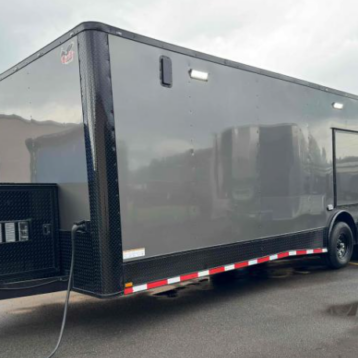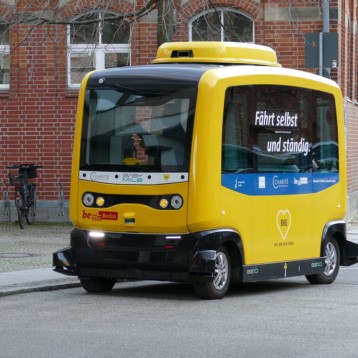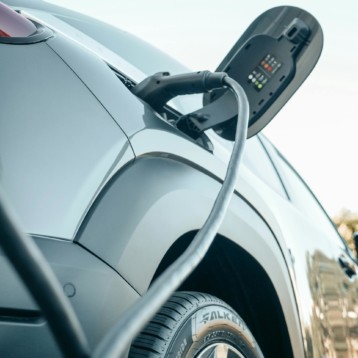The automotive industry is a very interesting one to watch. You see all sorts of new trends and ideas emerge from there, and there’s often a trickle-down effect on wider areas of society. The technology seen in the auto industry will eventually find its way to other industries, improving our lives.
Regardless, we want to look at how drastically the industry has evolved in the last twenty years alone. Since the turn of the century, we have seen loads of tech and engineering innovations that have changed the way the modern car looks and operates. Take two cars – one that was made in the year 2000, and one made in 2021 – and look at how different they are. A 20-year-old car is hardly classified as a classic motor, yet it feels archaic compared to the modern vehicles of today.
So, how have things changed and evolved? Let’s take a look…
Headlamps
Something so simple, yet a crucial part of every single production car. Headlamps guide the way in dark or dreary conditions, and they’ve undergone an overhaul in the last two decades. At the start of the 2000s, we only just saw the gradual implementation of LED headlamps. Nowadays, they’re in basically every car. They offer a brightness that exceeds traditional halogen or high-intensity-discharge headlamps, with more flexibility.
Modern headlamps can actually turn on or off individual LED lights within them, based on how dark it is outside. It ensures that drivers will always get as much light as they need, improving safety and your driving comfort.
Suspension
Over the years, the suspension system in cars has undergone dramatic improvements. Looking back twenty years ago, suspensions weren’t as bad as they were when cars were first introduced to the public. You can get some classic cars from the 80s that feel like you’re constantly driving along speedbumps, even when the road surface is flat!
Still, improvements have been made, and you typically see these in modern-day muscle cars. The Ford Mustang is the king of the muscle category, and you can find Mustang coilovers that revolutionize the suspension. They add more stability to the ride, letting the car sit lower while avoiding any rollover around corners. In short, modern-day suspension kits are much better as they soften impacts and make every road feel smoother.
Infotainment
Not so much an improvement to the practicality of a car, but something that has drastically changed nonetheless. In older cars, you had to make do with a car radio. Not only that, but you had to deal with an awful signal from the antenna, which cut out all the time.
Fast forward a few years, and we had CD players in cars – how fun! Towards the early 2000s, there were MP3 and Bluetooth capabilities. These days, you have an entire infotainment system at your disposal. We’re talking touch screens, WiFi connectivity – and even the ability to play games in some cars.
It’s one of the biggest differences, but it begs the question; why? The info part we can understand – modern cars provide far more information for you than older ones. You have live maps helping you plot your route with traffic updates, you can find out what the weather will be like during your journey, and so on. But, why has car entertainment changed to the point where video games can be played? What’s the point? Nobody gets in their car to be entertained – we do it to drive, and the fewer distractions we have, the better.
Perhaps it sounds grouchy, but couldn’t the money have been better spent on improving other aspects of a car? Or, you could’ve saved money on the car’s production, making it cheaper for us to buy!

Electric & hybrid technology
Without a doubt one of the most significant advancements in the auto industry is the improvement in both electric and hybrid technologies. Again, if we think back to the year 2000, you’d struggle to find many cars on the roads that were completely electric. The technology existed, but it was hard to make a car that was both as practical as a traditional one, and only needed electricity to power it.
We had hybrid technology, but that was still in its relatively early stages. Over the last two decades, both technologies have flourished, leading to drastic changes and improvements. Nowadays, we see more brands with hybrid and electric cars than ever before. Perhaps the biggest upgrade has been electric motors themselves. They are now powerful enough to compete with supercar combustion engines, yet practical enough to handle long journeys.
Of course, we also have to note the improvements in electric car infrastructure across the world. More charging points at gas stations and parking lots make it easier for electric vehicles to be practical.
Smarter technologies
Speaking of technology, car tech has gotten a lot smarter than it once was. We have pretty much always had cruise control, but before it would just set a speed and you would need to steer the car. Now, smart technology has incorporated sensors and radars to mean you can literally set some cars to cruise control and they drive within the lanes themselves.
Similarly, we have adaptive tech that reacts to situations by itself. Emergency braking systems are a prime example; modern cars notice objects in front of them and can brake automatically before you forget, preventing collisions.
Going even further than this, there’s the idea of autonomous driving. We’ve seen an example of it when talking about cruise control, but technology has become so advanced that modern cars are capable of driving themselves.
It feels like we’ve covered a lot in this post, but we’ve barely scratched the surface of how different cars were in the past compared to now. These are the main changes and improvements, and it’s fair to say that the modern car has evolved a lot from the turn of the century. What else can we expect from the auto industry as new innovations continue to pile on?










